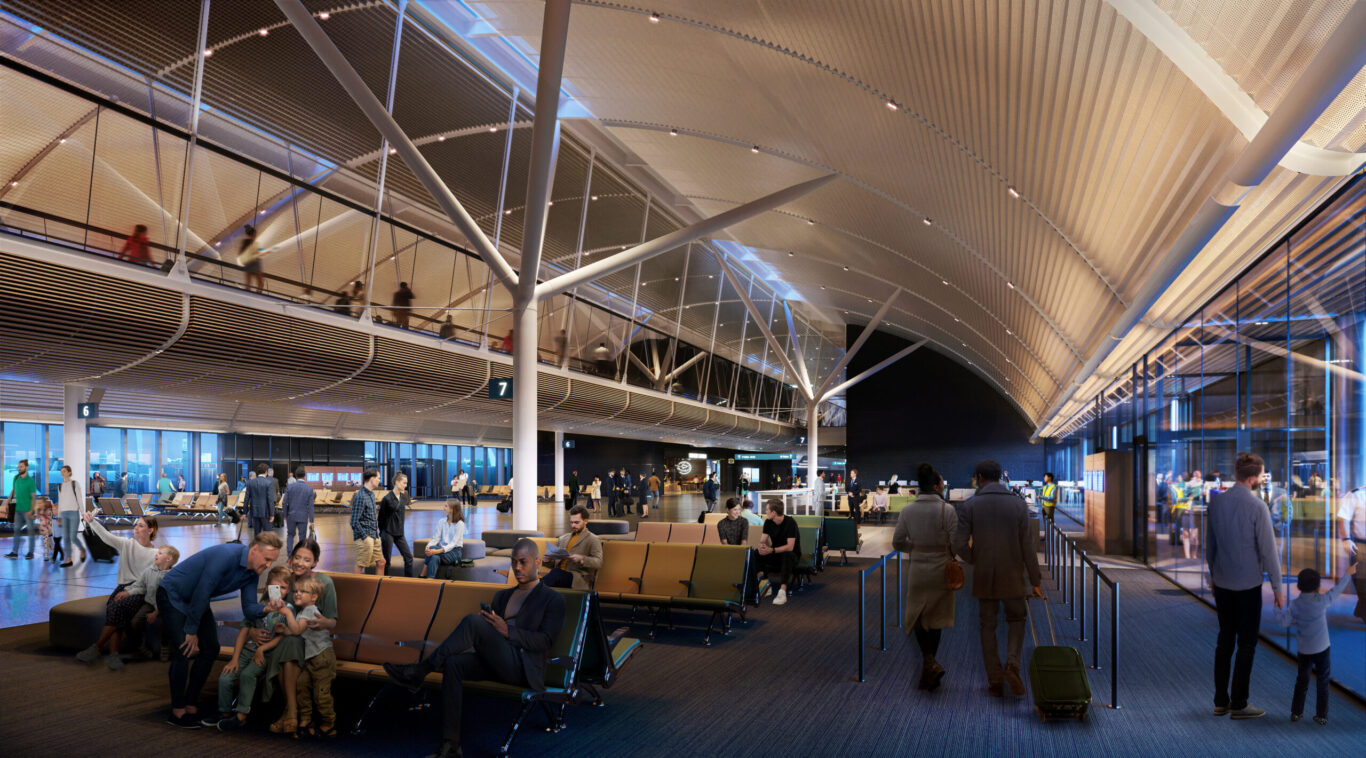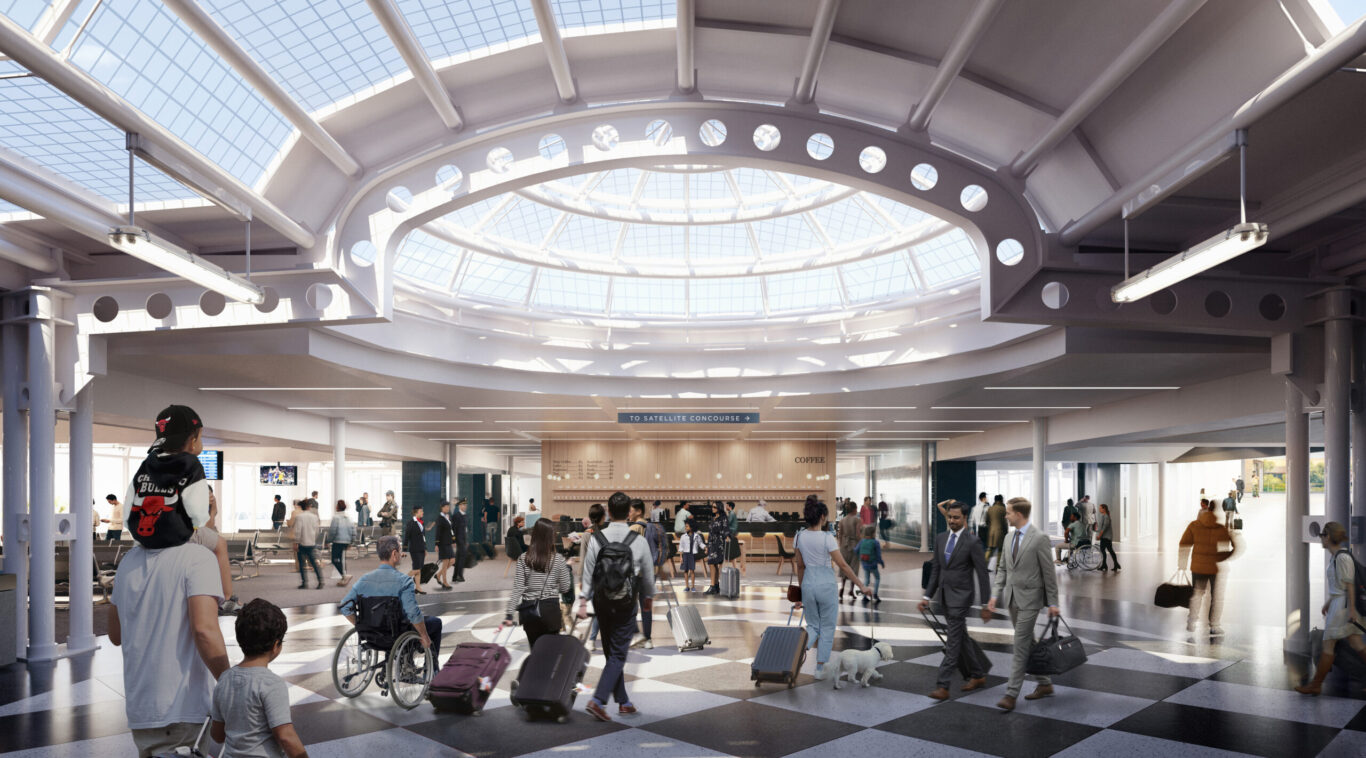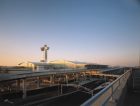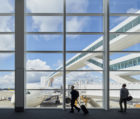A new era for O’Hare International Airport
Satellite Concourse One is the first new building to be constructed in the City of Chicago’s ambitious Terminal Area Plan—representing a generational investment in the future of O’Hare International Airport. Designed by SOM with Ross Barney Architects, Juan Gabriel Moreno Architects (JGMA), and Arup, this bright, modern concourse leads the largest area expansion and revitalization in the airport’s 68-year history.
The design draws inspiration from O’Hare’s original name, Orchard Field, a reference to its formerly bucolic site. This history is expressed through a series of dramatic “tree columns” that branch outward to support a 150-foot-wide long-span roof. The structural system reduces the number of interior columns by nearly half, opening the plan to improve flexibility at the gates and ease circulation for millions of passengers each year.








